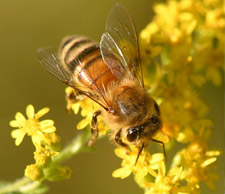

 Royal Jelly can only be collected from the cell – or honeycomb – of the queen bee larvae. While all bee larvae are fed Royal Jelly in their first few days of development, a select few, who will become queens, have their honeycomb cell stockpiled with generous quantities of Royal Jelly for their first four days of life. It is at the end of this four-day period that Royal Jelly can be collected. A well-managed hive can produce about 500g of precious Royal Jelly in a six-month season.
Royal Jelly can only be collected from the cell – or honeycomb – of the queen bee larvae. While all bee larvae are fed Royal Jelly in their first few days of development, a select few, who will become queens, have their honeycomb cell stockpiled with generous quantities of Royal Jelly for their first four days of life. It is at the end of this four-day period that Royal Jelly can be collected. A well-managed hive can produce about 500g of precious Royal Jelly in a six-month season.
As the product is delicate it must be placed into cold storage immediately to ensure its potency is retained. Natural Life™ Royal Jelly comes fresh (250gm / 1kg) as well as in soft gel capsules (60 or 365, 1000mg caps), ensuring that the Royal Jelly's potency is captured and protected, while allowing for its convenient use and storage.
Natural Life™ Royal Jelly and Natural Life™ Propolis products are selected from the purest beehives – free from chemical or antibiotic sprays.
Royal jelly: what all the buzz is about
Produced by glands in worker bees' heads,
royal jelly
is fed to larvae and the adult queen bee.
![]()
Typical Constituents of Royal Jelly
A literature search has been conducted to determine
constituents of Royal Jelly.
![]()
Australian Jelly Bush – A Powerful Anti Bacterial
A native honey may well be the most
powerfully antimicrobial honey ever discovered, say Queensland researchers.
